Showing Spotlights 1393 - 1400 of 2851 in category All (newest first):
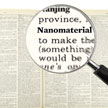 In order to regulate nanomaterials and to determine mandatory product labelling a generally accepted agreement what the term 'nanomaterial' means has to be reached beforehand. The EU Parliament requires that a definition shallbe science-based and comprehensive. Furthermore, for regulatory measures in individual sectors, it shall be unambiguous, flexible, easy and practical to handle. During the past few years various institutions came up with suggestions for a definition, leading to a recommendation of the EU commission, which finally is being accepted into new and existing EU legislation. Some provisions in this proposal are controversial and the implementation into specific sectoral legislation constitutes a major challenge.
In order to regulate nanomaterials and to determine mandatory product labelling a generally accepted agreement what the term 'nanomaterial' means has to be reached beforehand. The EU Parliament requires that a definition shallbe science-based and comprehensive. Furthermore, for regulatory measures in individual sectors, it shall be unambiguous, flexible, easy and practical to handle. During the past few years various institutions came up with suggestions for a definition, leading to a recommendation of the EU commission, which finally is being accepted into new and existing EU legislation. Some provisions in this proposal are controversial and the implementation into specific sectoral legislation constitutes a major challenge.
Jun 6th, 2013
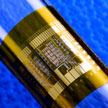 Flexible electronics are all the rage these days. They promise an entirely new design tool like for instance, tiny smartphones that wrap around our wrists, and flexible displays that fold out as newspapers or large as a television; or photovoltaic cells and reconfigurable antennas that conform to the roofs and trunks of our cars. This article reviews the progress in single-walled CNT and graphene-based flexible thin-film transistors related to material preparation, fabrication technique and transistor performance control, in order to clarify the possible scale-up methods by which mature and realistic flexible electronics could be achieved.
Flexible electronics are all the rage these days. They promise an entirely new design tool like for instance, tiny smartphones that wrap around our wrists, and flexible displays that fold out as newspapers or large as a television; or photovoltaic cells and reconfigurable antennas that conform to the roofs and trunks of our cars. This article reviews the progress in single-walled CNT and graphene-based flexible thin-film transistors related to material preparation, fabrication technique and transistor performance control, in order to clarify the possible scale-up methods by which mature and realistic flexible electronics could be achieved.
Jun 5th, 2013
 The European Commission acknowledges that nanomaterials are revolutionary materials and that important challenges exist in regard to hazard and exposure assessments. Yet, they conclude that current risk-assessment methods are applicable to nanomaterials. Scientists argue that significant changes to REACH and the accompanying annexes are required to answer the call made by the public, downstream users and progressive businesses for clearer and more definite regulatory rules specific to nanomaterials.
The European Commission acknowledges that nanomaterials are revolutionary materials and that important challenges exist in regard to hazard and exposure assessments. Yet, they conclude that current risk-assessment methods are applicable to nanomaterials. Scientists argue that significant changes to REACH and the accompanying annexes are required to answer the call made by the public, downstream users and progressive businesses for clearer and more definite regulatory rules specific to nanomaterials.
May 28th, 2013
 The degree of competitiveness in sports has been remarkably impacted by nanotechnology like any other innovative idea in materials science. Within the niche of sport equipments, nanotechnology offers a number of advantages and immense potential to improve sporting equipments making athletes safer, comfortble and more agile than ever. Baseball bats, tennis and badminton racquets, hockey sticks, racing bicycles, golf balls/clubs, skis, fly-fishing rods, archery arrows, etc. are some of the sporting equipments, whose performance and durability are being improved with the help of nanotechnology. Nanomaterials such as carbon nanotubes, silica nanoparticles, nanoclays fullerenes, etc. are being incorporated into various sports equipment to improve the performance of athletes as well as equipments.
The degree of competitiveness in sports has been remarkably impacted by nanotechnology like any other innovative idea in materials science. Within the niche of sport equipments, nanotechnology offers a number of advantages and immense potential to improve sporting equipments making athletes safer, comfortble and more agile than ever. Baseball bats, tennis and badminton racquets, hockey sticks, racing bicycles, golf balls/clubs, skis, fly-fishing rods, archery arrows, etc. are some of the sporting equipments, whose performance and durability are being improved with the help of nanotechnology. Nanomaterials such as carbon nanotubes, silica nanoparticles, nanoclays fullerenes, etc. are being incorporated into various sports equipment to improve the performance of athletes as well as equipments.
May 27th, 2013
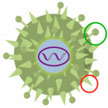 Nanomaterials hold promise as synthetic vaccines. They have the ability to deliver cargo to specific immune cells and modulate the resulting immune response. Compared to natural vaccine vectors, including engineered viruses or attenuated pathogens, synthetic nanoscale vaccines are safer, more controlled, and have the potential to be more effective. Nanoscale vaccines may also prevent, or even treat a wider range of diseases, including cancer. Researchers now have developed nanoscale polymer micelles that elicit both humoral and cellular immunity. The constructs could help in the fight against infectious diseases and cancer.
Nanomaterials hold promise as synthetic vaccines. They have the ability to deliver cargo to specific immune cells and modulate the resulting immune response. Compared to natural vaccine vectors, including engineered viruses or attenuated pathogens, synthetic nanoscale vaccines are safer, more controlled, and have the potential to be more effective. Nanoscale vaccines may also prevent, or even treat a wider range of diseases, including cancer. Researchers now have developed nanoscale polymer micelles that elicit both humoral and cellular immunity. The constructs could help in the fight against infectious diseases and cancer.
May 24th, 2013
 Nanotechnology is helping to revolutionize cancer hyperthermia - the treatment of cancer with heat. Certain types of nanoparticles, in particular those made of gold or iron oxide, act as transducers that absorb electromagnetic radiation and generate heat. If the nanoparticles are delivered selectively to a tumour, heat can be generated within the tumour tissue by irradiating it with an external energy source. This results in heat-induced cell death within the tumor, sparing the surrounding healthy tissues. Researchers have now developed gold nanoparticles coated with a temperature-sensitive dye. The constructs allow nanoparticle-induced heating to be monitored locally.
Nanotechnology is helping to revolutionize cancer hyperthermia - the treatment of cancer with heat. Certain types of nanoparticles, in particular those made of gold or iron oxide, act as transducers that absorb electromagnetic radiation and generate heat. If the nanoparticles are delivered selectively to a tumour, heat can be generated within the tumour tissue by irradiating it with an external energy source. This results in heat-induced cell death within the tumor, sparing the surrounding healthy tissues. Researchers have now developed gold nanoparticles coated with a temperature-sensitive dye. The constructs allow nanoparticle-induced heating to be monitored locally.
May 23rd, 2013
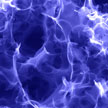 Researchers have come up with various electrode materials to improve the performance of supercapacitors, focussing mostly on porous carbon due to its high surface areas, tunable structures, good conductivities, and low cost. Graphene and carbon nanotubes show great potential but are costly. Researchers in Canada have now reported the successful hydrothermal-based synthesis of two-dimensional, yet interconnected, carbon nanosheets with superior electrochemical storage properties comparable to those of state-of-the-art graphene-based electrodes.
Researchers have come up with various electrode materials to improve the performance of supercapacitors, focussing mostly on porous carbon due to its high surface areas, tunable structures, good conductivities, and low cost. Graphene and carbon nanotubes show great potential but are costly. Researchers in Canada have now reported the successful hydrothermal-based synthesis of two-dimensional, yet interconnected, carbon nanosheets with superior electrochemical storage properties comparable to those of state-of-the-art graphene-based electrodes.
May 15th, 2013
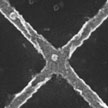 Ferromagnetic materials exhibit the so-called anomalous Hall effect (AHE), whereby the electrons flowing through the material experience a lateral force pushing them to one side as a result of the material's intrinsic magnetization. Although the AHE has been used in the field on nanotechnology to measure the magnetic behavior of nanoparticles (with sizes larger than 50 nm), nobody so far had tried to separate the signals of the individual particles. Researchers in Germany have now developed a simple technique which allows to measure the magnetic response of single ferromagnetic nanoparticles down to a radius of about 3.3 nm.
Ferromagnetic materials exhibit the so-called anomalous Hall effect (AHE), whereby the electrons flowing through the material experience a lateral force pushing them to one side as a result of the material's intrinsic magnetization. Although the AHE has been used in the field on nanotechnology to measure the magnetic behavior of nanoparticles (with sizes larger than 50 nm), nobody so far had tried to separate the signals of the individual particles. Researchers in Germany have now developed a simple technique which allows to measure the magnetic response of single ferromagnetic nanoparticles down to a radius of about 3.3 nm.
May 14th, 2013
 In order to regulate nanomaterials and to determine mandatory product labelling a generally accepted agreement what the term 'nanomaterial' means has to be reached beforehand. The EU Parliament requires that a definition shallbe science-based and comprehensive. Furthermore, for regulatory measures in individual sectors, it shall be unambiguous, flexible, easy and practical to handle. During the past few years various institutions came up with suggestions for a definition, leading to a recommendation of the EU commission, which finally is being accepted into new and existing EU legislation. Some provisions in this proposal are controversial and the implementation into specific sectoral legislation constitutes a major challenge.
In order to regulate nanomaterials and to determine mandatory product labelling a generally accepted agreement what the term 'nanomaterial' means has to be reached beforehand. The EU Parliament requires that a definition shallbe science-based and comprehensive. Furthermore, for regulatory measures in individual sectors, it shall be unambiguous, flexible, easy and practical to handle. During the past few years various institutions came up with suggestions for a definition, leading to a recommendation of the EU commission, which finally is being accepted into new and existing EU legislation. Some provisions in this proposal are controversial and the implementation into specific sectoral legislation constitutes a major challenge.
 Subscribe to our Nanotechnology Spotlight feed
Subscribe to our Nanotechnology Spotlight feed





